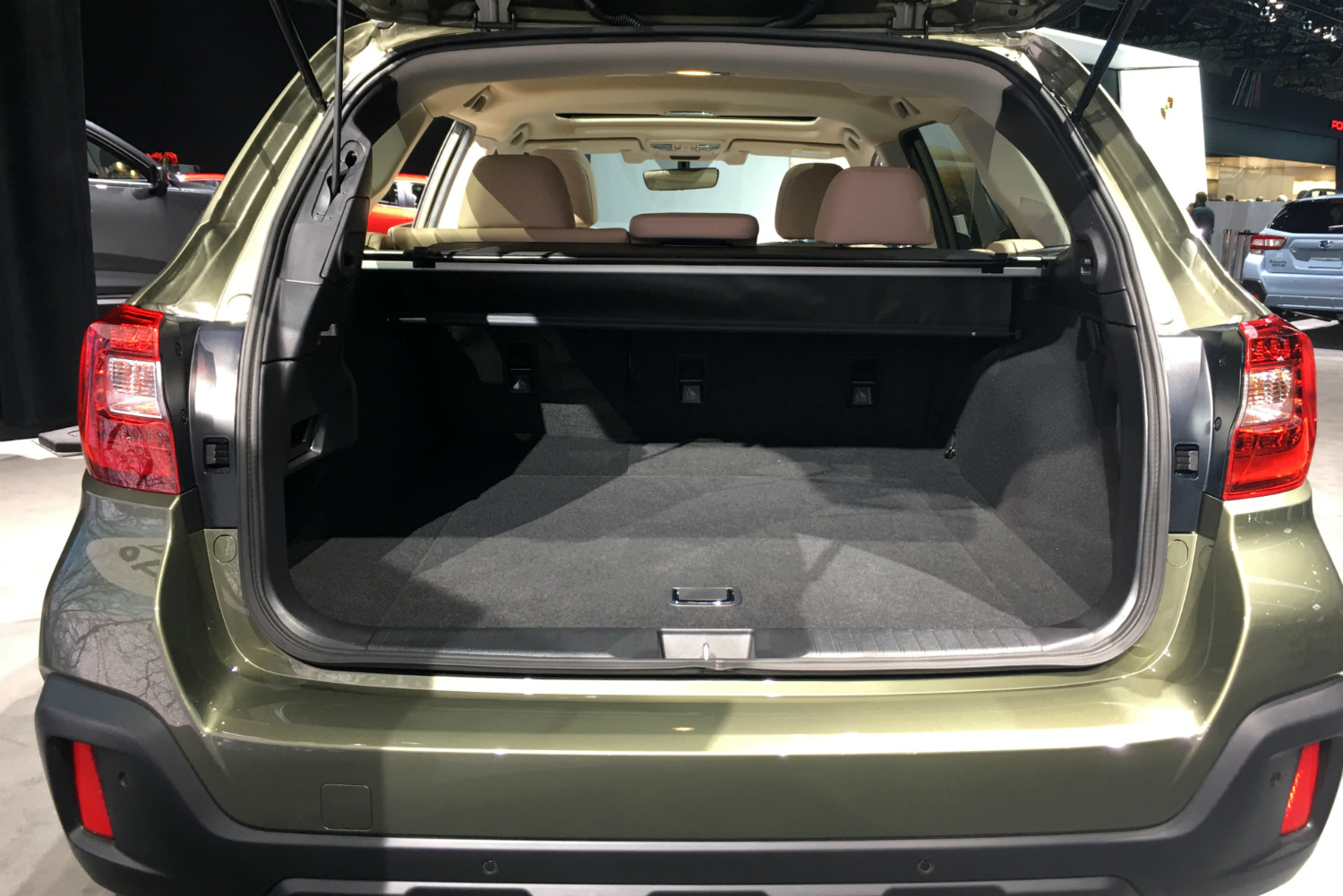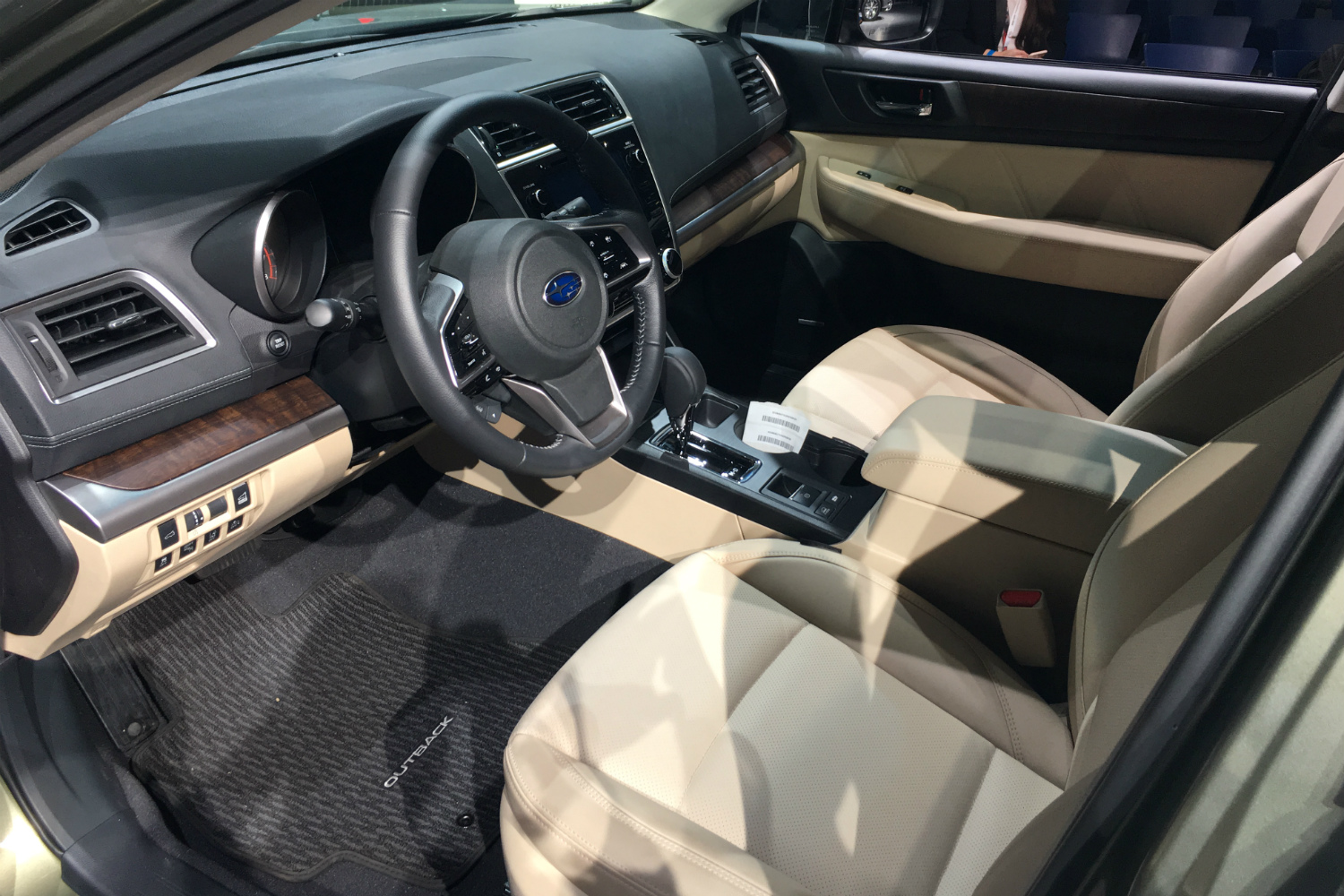The Subaru Outback has achieved the near-impossible, surviving the onslaught of SUVs that killed nearly every other wagon. Thanks to standard all-wheel drive and some plastic body cladding, Subaru is able to market the Outback as an SUV alternative. It has made for a profitable niche, but how does Subaru improve on that success?
Debuting at the 2017 New York Auto Show, the 2018 Subaru Outback gets some of the same styling tweaks as the 2018 Legacy that debuted in Chicago in February, plus more tech features. Overall, these make for relatively small changes to the current-generation Outback, which has been on sale since the 2015 model year. Will it be enough to keep Subaru’s sales champ sharp?
The 2018 Outback gets revised front and rear styling, but the new look isn’t a dramatic departure from the previous version. The most noticeable change is a new set of headlights with Subaru’s “Konoji” LED daytime running light signature. The Outback is basically a jacked-up Legacy wagon, sporting an impressive 8.7 inches of ground clearance. That’s a good amount even for a real SUV.
Subaru also added more safety tech for 2018, including a standard rearview camera on all trim levels and steering-responsive headlights that turn as the driver steers. This feature was previously available on fog lights. The Outback gets Subaru’s Starlink infotainment system with new 6.5 or 8.0-inch touchscreens, plus Apple CarPlay and Android Auto compatibility. Two USB ports have sprouted from the rear of the center console so rear-seat passengers can plug in.
The Outback is essentially unchanged mechanically. The base engine remains a 2.5-liter flat-four, which produces 175 horsepower and 174 pound-feet of torque. A 3.6-liter flat-six is optional, with 256 hp and 247 pound-feet of torque. Both engines are teamed with CVT automatic transmissions and all-wheel drive. Subaru did say that it retuned the Outback’s suspension for 2018 to improve ride quality.
The 2018 Outback is one of two Subaru models debuting at the 2017 New York Auto Show. The other is the redesigned 2018 Crosstrek which, as another car disguised as an SUV, is more or less the Outback’s little sibling. The Outback goes on sale this summer, with pricing to be announced closer to launch.











